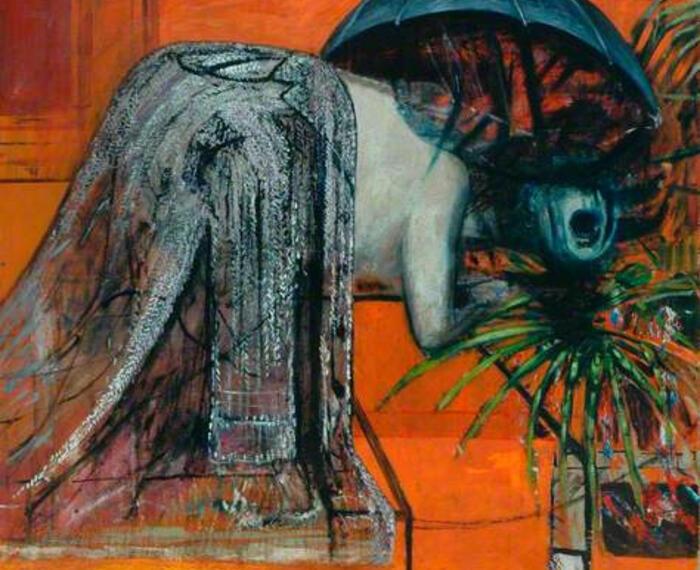

Emile Lenoble (b. Paris, France 1875 – d. Morgat, France 1940) grew up in Choisy-le-Roi and in 1893 went to Paris to attend the École nationale supérieure des arts décoratifs. After his studies he returned to his hometown and from 1897 he worked for seven years as a draughtsman in the Faïencerie Loebnitz earthenware factory. In 1904 he studied in the workshop of the sculptor and porcelain ceramicist Ernest Chaplet (1835-1909), who was also his wife’s grandfather. In December 1905 he had exhibited with Chaplet at the Georges Petit Gallery, Paris and received a commission for a 500-piece Greek-style dinner service that the French art historian Salomon Reinach commissioned for his Villa Kerylos in Beaulieu-sur-Mer.
Lenoble made pieces decorated in the style of Greek art and pieces of earthenware covered with enamel following the Japanese tradition, sometimes mixing the clay with kaolin. He developed inlaid decorations on his pot-bellied pieces with wavy lines, spirals or plant ornaments, which he engraved in a thick layer of white engobe and then were covered with a transparent layer. The decorations of his pieces were also inspired by Celtic and Middle Eastern art and, after the First World War, increasingly, he turned to Chinese and Korean ceramics for inspiration. In 1925 he exhibited at the Paris World Fair and since that was influenced by African art which resulted in the use of more geometric motifs whilst balanced between the Art Nouveau and Art Deco styles.